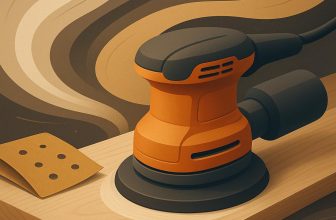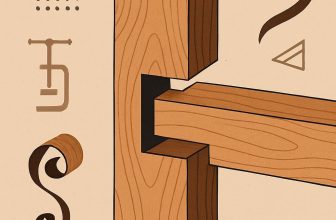
Catch this: the moment you think a project is done, a tiny flaw reveals itself and threatens to derail hours of effort. Smart speedy Fixes for Common Woodworking Problems shows you how to keep projects moving without a full redo. For woodworkers, time and accuracy are everything-small problems today can become costly setbacks tomorrow. This guide offers practical, field-tested fixes you can apply with everyday tools: quick joint adjustments, glue-up tricks, veneer tears, warps, and finish hiccups. By the end, you'll know immediate remedies, when to patch or replace, and how to plan smarter for next time.:
Diagnosing Common Woodworking Problems with Practical Inspection Techniques
Diagnosing common woodworking problems starts with careful observation and a simple, repeatable checklist.Look for clear symptoms-ruffled surfaces, gaps, misaligned edges, or unusual resistance when you run a cut. Then verify the basics: stock moisture, tool condition, fence alignment, and whether pieces were prepared in the same surroundings. A fast, honest audit frequently enough identifies the culprits before you reach for a fix, saving you time and scraps.
warp, bow, and twist are sneaky culprits that can throw off fit and finish. Use a straightedge or level to scan the face of boards, and test the edges for parallelism. Check moisture content with a reliable meter and compare to your target range. If you find imbalance, acclimate stock in a controlled area, adjust storage, or plane to remove the warp in a direction that preserves the grain. After each adjustment, re-check with the straightedge to confirm stability.
- Secure the workpiece and work in good light to spot subtle cupping or warping.
- Record and compare moisture readings across boards intended for the same assembly.
- Plan a controlled flattening strategy (one surface or edge) and re-check straightness after each pass.
Joinery and hardware issues surface when parts won't meet square or glue lines misbehave. Dry-fit components to check alignment before glue, verify square with a reliable square, and confirm drill holes line up along the intended path. If anything looks off,re-cut or adjust,and clamp with even pressure to avoid glue-starved joints or squeeze-out. Clean up residue promptly so you can inspect a true glue line.
- Measure corner squareness at several points along each joint.
- Test-fit mortises, tenons, or dowels before glue-up.
- Use masking tape or spacer shims to keep faces flush during assembly.
| Symptom | Likely cause | Quick check | Simple fix |
|---|---|---|---|
| Warp, bow, twist | Moisture imbalance or inappropriate storage | Straightedge, measure moisture | Acclimate stock, flatten as needed |
| joint gaps or misalignment | Improper fit or dull machinery | Dry-fit and square | Re-cut joints, re-square, re-clamp |
| Rough finish or tear-out | Dull blade or aggressive feed | Test cut on scrap | Sharpen/replace blade; adjust pass |
| Glue squeeze-out | Over-submission or uneven clamps | Inspect glue line during clamp | Wipe, re-clamp, use minimal glue |
Finish and tool health problems reveal themselves in texture and color. Note chatter marks, burning, or nibs-usually a sign of a dull blade or overly aggressive feed. Test a small cut on scrap to gauge how the grain behaves, then sharpen or replace tooling as needed. Confirm sanding progression from rough to smooth, and ensure your chosen finish is compatible with the wood and moisture content. A disciplined prep followed by a targeted fix prevents finishing woes from reappearing on the final piece.
Build Your Dream Workshop on a Budget →
Quick fixes for Warps and Bowing Edges Using Clamping and Planing Strategies
Warped boards respond best to controlled clamping and careful planing. First categorize the warp: edge bow (a bow along the length), cup (a concave face), or twist (two ends higher than the center).The objective is to establish a stable reference face and guide the plane across the opposite surface with light, progressive cuts. Start with the warped piece resting on a perfectly flat reference surface, then clamp firmly so pressure is evenly distributed without creating dents or spring-back.
Clamping is the frontline fix for warps. Use long, straight clamps with padded cauls to spread pressure across the bend, and position clamps on the high side of the bow to pull it flat. Place a straightedge or level across the stock to verify flatness as you tighten, and consider dry-pressing the stock by placing weight in the middle if clamps cannot reach.Flexible cauls (or cork pads) prevent imprinting while still delivering even load, and alternating clamp locations helps avoid pinching the wood.
Once the edge is visually flat, switch to planing with care. Work from the reference face toward the opposite face, taking light passes and checking flatness after every few strokes. Plane with the grain whenever possible, or use a scrub or fore plane to remove high spots, then finish with a smoother pass.If cupping remains, alternate planing directions or use a scraper to knock down the bend without digging in.After planing, re-check moisture content and acclimate the board if necessary to reduce a return warp.
For a quick reference, review the compact guide below where warp types align with practical clamping and planing moves. The emphasis is on even pressure, careful material handling, and verifying flatness frequently enough to prevent re-warping over time.
| warp Type | Clamping/Support | Planing approach | Notes |
|---|---|---|---|
| Edge bow | Pad with cauls; clamp along the high edge to pull flat | Plane from the reference face across to the bowed edge; take light passes | Avoid overdrying; recheck with a straightedge |
| Cup | Clamp opposite the concave face; use cork pads to prevent dents | Planing from flat face toward cupped side; use scraper for stubborn high spots | Keep pressure even to maintain flatness |
| Twist | Two clamps at ends with opposing pulls; add center support if needed | Work in sections, alternating from ends toward center | Recheck for residual twist after initial passes |
Build Your Dream workshop on a Budget →
smoothing Surfaces and Eliminating Splinters with targeted Sanding and Filler Techniques
Smooth woodworking surfaces by following a deliberate grit progression and steady, grain-guided motion. Start with a coarse grit (roughly 120-150 grit for most woods) to knock down obvious tool marks, then move up to 180-220 grit for a true, even base. Finish with 320-400 grit to create a silky feel under a finish. Keep the sanding block flat to prevent dips, and let the grain dictate your path rather than forcing the sander across irregular areas. Between grits, wipe the surface with a tack cloth or damp rag to remove dust, check for remaining scratches, and keep a light touch-pressing hard can flatten the wood and create new blemishes. For panels or veneered surfaces, consider a light pass with a fine abrasive designed for veneers to avoid fuzzing.
Dealing with splinters and raised fibers is about targeted removal and feathering. When you find a stubborn splinter, pare it flush with a sharp chisel or knife, then re-sand with fine grit to blend.For curved or irregular edges, wrap sandpaper around a dowel, cork, or small block and sand with the grain until the edge fades away. Move across the surface in short strokes and stop as soon as the splinter lies flush; over-sanding can create a new hollow that will show through the finish. After you address the splinter, wipe away dust and inspect under good light. If a spot still feels rough, a light 180-220 grit pass along the grain helps feather the transition without leaving a visible ridge.
Filler techniques let you seal gaps and pores so the final finish looks uniform. For small cracks and shallow indentations, water-based wood filler is convenient and sands easily, especially when matched by color. For deeper gouges or exterior projects, a two-part epoxy putty provides strength and water resistance. For open-pore woods (oak, ash, or mahogany), apply a grain filler to fill pores and create a smooth surface before finishing. Apply filler with a flexible putty knife in a thin, even layer, then let it cure fully and sand with 320-400 grit until flush. Remember: lighter, multiple thin applications beat one thick layer, and always test color and stain acceptance on a hidden patch first.
| filler Type | Best For | Pros | Cons |
|---|---|---|---|
| Water-based wood filler | Small cracks,shallow dents,color-matching | Easy cleanup; sands smoothly | May raise grain on soft woods; may shrink |
| Two-part epoxy putty | Deep gouges; exterior or high-stress areas | Very strong; durable | Longer curing time; harder to sand |
| Grain filler (porous woods) | Open pores (oak,ash,mahogany) | Fills pores; creates even surface for dye | Requires drying time and multiple coats |
Build Your Dream Workshop on a Budget →
reinforcing Joints with Adhesives and Correct Drying for stronger Wood Connections
to reinforce joints with adhesive, planning is everything. Start with clean, dry surfaces-wipe away dust, oils, and any previous glue. Lightly sand mating faces with 120-grit to create a micro-tooth that helps the adhesive bite. For end-grain areas or joints that will bear load, a touch more bite and a longer open time can pay off.For most interior projects, PVA glue works well, while exterior or damp environments benefit from polyurethane or epoxy that can better resist moisture. Keep the wood at a low moisture content (generally under 12%) to minimize movement after the glue has set.
Clamping and alignment are crucial during the cure. Use flat cauls and parallel clamps to distribute pressure evenly, and protect the glue line from squeeze-out with parchment or waxed paper. Avoid overtightening, which can squeeze the glue out and starve the joint of contact. After the initial set, recheck alignment and keep the pieces under restraint until the adhesive cures to full strength.
- Protect the glue line with parchment or waxed paper to prevent squeeze-out sticking to clamps
- Check alignment during clamping and release gently when the glue has set
- Maintain steady temperature and humidity to avoid premature or uneven curing
Drying conditions and open time matter. Work in a workshop near 65-75°F (18-24°C) with humidity around 40-60%. Open times and full cure vary by adhesive type. Plan accordingly: PVA offers about 5-15 minutes of tack with full cure in roughly 24 hours; epoxy typically has a 5-15 minute open time and reaches full strength in 24-72 hours; polyurethane glue often has a longer open time and requires 24-48 hours to finish curing. Always follow the manufacturer's guidelines and avoid stressing the joint during cure.
| Joint Type | Recommended Adhesive | Typical Open Time | Full Cure |
|---|---|---|---|
| Edge-to-edge panels | PVA or epoxy | 5-15 min (PVA); 5-30 min (epoxy) | 24 h (PVA); 24-72 h (epoxy) |
| End-grain joints | Epoxy or polyurethane | 5-15 min (epoxy); 10-20 min (PU) | 24-48 h |
| Dowel/mortise-and-tenon (interior) | PVA (interior); epoxy for high strength | 5-15 min | 24 h+ |
| Exterior/moisture-prone | Polyurethane or epoxy | 10-20 min | 24-72 h |
When the bond has cured, verify its strength before finishing. Do a gentle test clamp on a scrap piece or the joint itself, examine for any gaps or weak spots, and address them promptly if needed. Wipe away any remaining glue with a damp cloth while it's still fresh, and wait to sand or finish until the cure is complete. with the right adhesive choice for the joint and proper drying, your wood connections will stay strong through use and seasonal shifts.
Build Your Dream Workshop on a Budget →
Repairing Finishes and Color Matches with Timely stains and protective coatings
Finishing repairs are often resolved by precisely matching the color and sealing it with the right protective coating. start by evaluating the damage: is there a color shift, a scratch revealing bare wood, or an area that looks uneven next to the rest of the piece? Clean the surface with a mild cleaner and wipe away dust. Lightly scuff sand with 180-220 grit to create tooth for new finish, then wipe away the dust. If the wood tone leans toward red or yellow,plan to adjust with a tint that blends rather than dominates. When you're ready, open a can of Timely Stains and prepare to test on scraps or a hidden area.
Testing is your best friend for color matching.Apply a small amount of Timely Stains to a scrap or inconspicuous spot, and compare as it dries as color shifts slightly with drying time. Build color in thin layers: wipe on, then wipe off after a minute, repeating until you approach the target. Keep notes of shade, coats, and dry time for future touch-ups. If the nearby finish resists blending, introduce a glaze or a tinted topcoat to pull the color into harmony, ensuring you seal the glaze with a compatible clear coat.
A durable seal completes the fix and protects the match from everyday wear. Choose a protective coating that suits the piece and its environment. For a warm, conventional look, pair Timely Stains with an oil-based polyurethane; for a quick-drying, low-odor option, opt for a water-based topcoat over a water-based stain. The table below summarizes common pairings and what to expect.
| Option | Finish Goal | Notes |
|---|---|---|
| Oil-based Stain + Poly | deep, durable color | Longer dry time; robust protection |
| Water-based Stain + water-based Topcoat | Clearer look; quick dry | Low odor; watch for blush on resinous woods |
| Gel Stain | Even color on blotchy woods | Good control; needs compatible topcoat |
Maintenance and troubleshooting: if color drift shows up with light exposure, apply a final pass of a compatible tinted topcoat to even out the appearance over time. Always perform a test after any change in product line to confirm compatibility. To keep the finish looking fresh, store stained pieces away from direct sun and heat, and recoat every few years depending on use.
Build Your Dream Workshop on a Budget →
Selecting Tools and Materials for Efficient Woodworking Repairs and Maintenance
Choosing the right tools and materials sets the tempo for fast, reliable repairs. Build a compact,core kit of dependable steel hand tools-sharp chisels,a smoothing plane or block plane,a solid mallet,a set of screwdrivers,and a reliable set of clamps. pair these with accurate measuring and marking gear, such as a combination square and a marking knife, so layouts stay crisp as you work. For maintenance tasks, keep abrasive pads, steel wool, a sanding block, a magnetic tray for fasteners, and a compact tool roll to minimize rummaging between steps. With durable, versatile gear that feels cozy in hand, you'll reduce trips to the toolbox and keep momentum on repairs.
| Tool category | Recommended option | Why it helps |
|---|---|---|
| hand tools | Quality steel chisels and planes | Sharp edges last; precise cuts and fits |
| Measuring & marking | Combination square, marking knife | Accurate layouts reduce guesswork |
| Adhesives & fillers | PVA glue, epoxy, CA glue | Strong bonds; gap filling where needed |
| Finishing & cleanup | Sanding blocks, microfiber cloths, abrasive pads | Consistent surfaces and finish prep |
| Holding devices | Clamps (F-style or parallel-bar) | Consistent pressure; stable repairs |
When selecting materials, tailor choices to the wood you're repairing and the finish you'll apply. For tiny nicks and shallow gouges, water-based wood filler dries clean and sands flat. For larger cracks or broken joints, an epoxy resin mixed with wood flour yields strong, gap-filling repairs that can be shaped before curing. For quick temporary fixes or small edges, a fast-setting CA glue can be handy, but use it sparingly and in thin layers. Always match the adhesive to the wood type and the final finish, and roughen bonding surfaces to improve grip.
streamline your workflow and protect longevity with smart practices. Dry-fit every repair before committing to glue or finish, then wipe away excess adhesive to avoid staining. Keep your kit organized in clearly labeled containers or a portable roll, so you can grab everything you need without losing momentum. Label batches of finishes and fillers,store them upright,and rotate through a simple maintenance routine-clean tools after use,sharpen edges periodically,and inspect clamps for burrs or misalignment.A disciplined setup turns quick fixes into lasting improvements.
Build Your Dream Workshop on a Budget →
Q&A
How can I minimize tear-out when planing or routing rough wood?
Use sharp, quality blades and the right bit for the wood, and work with the grain for cleaner surfaces. Make light, shallow passes and support the cutting line with a backer board or masking tape. If possible, choose a down-cut or compression bit and avoid aggressive climb cuts to reduce tearing; finish with a light final pass for a smooth edge.
What's the quickest fix for a loose joint or a panel gap after glue-up?
Re-clamp with even pressure using cauls and clamps, ensuring the parts stay square as the glue cures. Wipe away squeeze-out and reapply glue where needed; for small gaps, fill with a color-matched wood filler or epoxy. for larger gaps or recurring slippage, consider adding a dowel, spline, or extra fasteners once the glue has set.
How can I fix dents or gouges in finished wood without a full refinishing?
For shallow dents, dampen the area with a wet cloth and apply a hot iron to raise the fibers, then wipe and lightly sand smooth. For deeper gouges, fill with matching wood filler or epoxy, let cure, and lightly sand before touching up with stain or clear finish. Always test the filler/color on a hidden spot first to ensure a clean color match.
What are quick tricks to prevent finish sags, runs, or uneven coats?
Apply thin, even coats and avoid heavy buildup; if you see runs, back off and slide into a lighter pass while the finish is still workable. Keep a stable environment with moderate temperature and humidity and lightly sand between coats for better adhesion. choose the right applicator (synthetic brush or foam pad) and wipe off excess while it's wet to avoid pooling.
in Retrospect
These quick fixes remind us that most woodworking challenges don't require heroic measures-just the right approach. A sharp blade, a measured pause, and a clever workaround can save time, reduce waste, and help you recover from missteps with less drama. The takeaway is simple: small, well-chosen tweaks compound into cleaner joints, smoother finishes, and lasting results. For hobbyists and pros alike, that reliability keeps projects moving and creativity flowing. So try a repair, explore another guide, or test a tweak on scrap before the real cut. May your next project be steadier and your curiosity bolder.







These tips are so handy! I can’t wait to try out the suggestions for fixing warped wood-just what I needed!
Great to see practical solutions for everyday issues! I’m particularly interested in the tips for dealing with rough edges-always a challenge for me!
Love these quick fixes! The advice on aligning joints is especially useful; I’ve struggled with that in my projects.
These fixes are a game changer! I really appreciate the solutions for enhancing joinery; it’s amazing how small tweaks can make such a big difference in the final product!
These insights are invaluable! I’m especially looking forward to trying out the methods for preventing splintering; it’s been a constant headache in my woodworking!
Fantastic tips! I’m eager to implement the advice on reducing glue squeeze-out; it’s been a pesky issue that I’ve been dealing with for too long!
These tips are incredible! I’m especially eager to try the techniques for improving finish quality; achieving that perfect shine has always been a bit of a struggle for me!
These solutions are so helpful! I can’t wait to apply the tips for avoiding wood warping; it’s been a major challenge for my recent projects!
I’m thrilled to see these quick fixes! The tips on correcting misaligned joints will be a lifesaver for me; I’ve struggled with that on several projects!
I’m so glad to see these quick fixes shared! The advice on dealing with cracks in wood is exactly what I need; I’ve had a few projects that could have really benefited from these tips.
These quick fixes are amazing! I’m particularly excited to try the method for fixing dings and dents; it seems like I always end up with a few on my projects!
I’m really impressed by these quick fixes! The advice on repairing split wood is something I’ve been searching for, and I can’t wait to put it into practice on my next project!